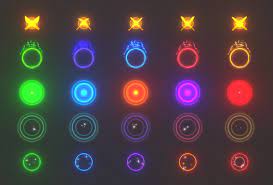In today’s digital world, the way users interact with interfaces is crucial. Visual effects (VFX) can significantly enhance user experience by making interfaces more engaging and intuitive. This article will explore how user-centric VFX strategies can improve interface usability, focusing on simple and informative insights.
The Role of VFX in User Interfaces
Visual effects are not just for movies and games; they play a significant role in user interfaces (UI) as well. VFX can guide users through a website or application, highlight important elements, and provide feedback on actions. For those interested in learning how to incorporate these elements effectively, taking a VFX training in Udaipur can be beneficial.
Enhancing Usability with VFX
Usability is all about how easy and efficient it is for users to navigate an interface. By using VFX thoughtfully, designers can create more user-friendly interfaces. For instance, animations can make transitions between pages smoother, helping users understand the flow of the interface. Additionally, subtle effects like hover animations can provide immediate feedback, making the interaction more intuitive.
Balancing Aesthetics and Functionality
While VFX can make an interface look more appealing, it’s essential to balance aesthetics with functionality. Overusing visual effects can clutter the interface and distract users. Therefore, the key is to use VFX sparingly and purposefully. Learning this balance is a crucial part of any ui-ux course in Udaipur, where students can develop the skills needed to create functional and beautiful interfaces.
Importance of User-Centric Design
A user-centric design approach means putting the user’s needs and preferences at the forefront of the design process. VFX should enhance the user’s experience without overwhelming them. This involves understanding the target audience and designing effects that are relevant and helpful. For example, simple animations can guide users to complete tasks more efficiently, making the interface more user-friendly.
Practical Applications of VFX in UI/UX
There are several practical ways to incorporate VFX into UI/UX design. Micro-interactions, such as button animations and loading spinners, provide real-time feedback to users. Transition animations can make navigating between different sections of an app smoother. For those looking to delve deeper into these techniques, enrolling in a ui-ux course in Udaipur can provide hands-on experience and knowledge.
Learning and Implementing VFX Strategies
For designers aiming to enhance their UI/UX skills with VFX, proper training is essential. Courses focusing on VFX training in Udaipur offer comprehensive learning experiences, covering both the technical and creative aspects of VFX in design. These courses teach how to create effects that are not only visually appealing but also functional and user-friendly.
Conclusion
Incorporating VFX into user interfaces can greatly improve usability when done correctly. By focusing on user-centric strategies, designers can create interfaces that are both engaging and easy to use. Balancing aesthetics with functionality, understanding the target audience, and learning through proper training are key steps in mastering this skill. For those interested in enhancing their design capabilities, pursuing a ui-ux course in Udaipur and VFX training in Udaipur can provide valuable insights and practical knowledge.
By following these principles, designers can create interfaces that are not only visually stunning but also enhance the overall user experience, making digital interactions smoother and more enjoyable.

